10 big observations from the first 2 weeks of the NBA season
Though NBA personnel will tell you we're still a long way from having a sample large enough to truly evaluate teams, players, and trends, an off day Nov. 7 at the two-week mark of the new season presented a great opportunity to take stock of things.
We have another five-to-seven months to figure out what's real and what's a mirage, but for now, let's have some fun. Below are 10 big observations from the first two weeks of the season.
Defending champs are a well-oiled machine
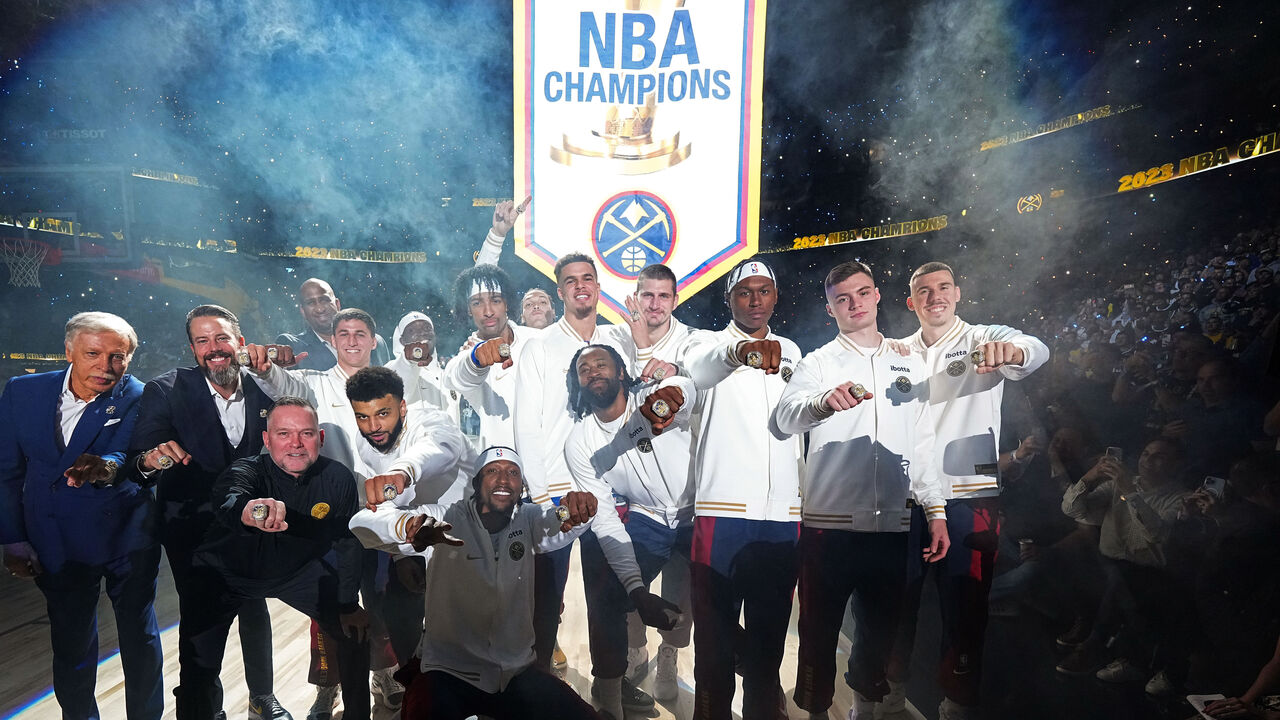
There's no championship hangover in Denver, where the Nuggets have throttled opponents by an average of 10.9 points per game while winning seven of their first eight.
With Nikola Jokic at the center of it all, and every player orbiting around him playing his role perfectly, the Nuggets have reached a level of basketball mastery that every team aspires to. The combination of Jokic's brilliance, a selfless supporting cast, and continuity over the years has Denver two steps ahead of opponents at every turn. Every Nuggets player knows where to be, where the ball should be, where it's going next, and how the other four players on the court will react in kind.
Even Bruce Brown's departure has barely been felt, with young reserves Christian Braun, Peyton Watson, and 29th overall pick Julian Strawther filling in admirably off the bench.
The only bad news is Jamal Murray's hamstring injury, which could derail momentum. Then again, in Denver's first game without the Canadian, the Nuggets turned a 20-point deficit into an 18-point victory while Jokic cruised to a 35-point triple-double. Ho-hum. - Joseph Casciaro
New-look Bucks lost their defensive identity

We knew Milwaukee was going to take a big step back defensively this season, especially after announcing that Malik Beasley would start alongside Damian Lillard in the backcourt. The Bucks were getting flimsy on the wing even before this offseason, and then they took a huge hit at the point of attack. Beasley, a minus defender his whole career, has been getting the toughest perimeter assignment every night.
The Bucks' saving grace, in theory, is that they still have two of the world's best rim-protectors and back-line helpers in Brook Lopez and Giannis Antetokounmpo providing a safety net behind that leaky perimeter. One problem, though: The scheme new coach Adrian Griffin had them running to begin the season often pulled those rim-protectors away from the basket while tasking their smallest and weakest help defenders with arduous rotations. Lopez was defending way higher up the floor than he's used to, and never seemed entirely comfortable there. Behind him, nobody seemed quite sure of where they were supposed to be or what they were supposed to do.
No one suffered more from that confusion than Antetokounmpo. It was bizarre watching a five-time All-Defensive teamer and former Defensive Player of the Year regularly blow rotations and get manipulated into abandoning his help assignments to concede layups and dunks.
With the team languishing in the bottom three in defensive rating and allowing opponents to shoot over 80% at the rim (over 80%! At the rim! Against the Bucks!), Griffin wisely took his own players' advice and reverted to a more conventional drop-back scheme. The results quickly improved. Lopez is back where he's supposed to be - barricading the basket - while Lillard and Beasley have looked better (albeit still not good) in a role that asks them to do more on-ball chasing and less weak-side helping. Antetokounmpo still doesn't look like himself, though he may be turning a corner.
But that isn't a solution, as demonstrated when Brooklyn hung a 120.2 offensive rating on the Bucks on Monday night. Their drop coverages will still suffer from a lack of rear-view pressure, and they're still going to be prone to blow-bys at the point of attack. Things aren't much rosier on the wing, where a slowing Khris Middleton is on a tight minutes limit and Jae Crowder can no longer stay in front of anybody. Lopez, in his age-36 season, can only cover for so much.
That half-court scheme tweak also won't fix the fact Milwaukee is getting absolutely shredded in the open floor, allowing both the highest frequency of transition possessions and highest scoring efficiency on those possessions of any defense in the league, per Cleaning the Glass. It's a problem that started to show up last season as the team's age and lack of athleticism became more evident.
They won't be this bad all year, especially once Griffin realizes MarJon Beauchamp - the best and most athletic perimeter defender on the roster - needs to be starting over Beasley. But it's clear that defense is going to be a weakness rather than a strength, and that puts a ton of pressure on the Bucks' offense, which has some early kinks to iron out. - Joe Wolfond
Doncic, Mavs own crunch time
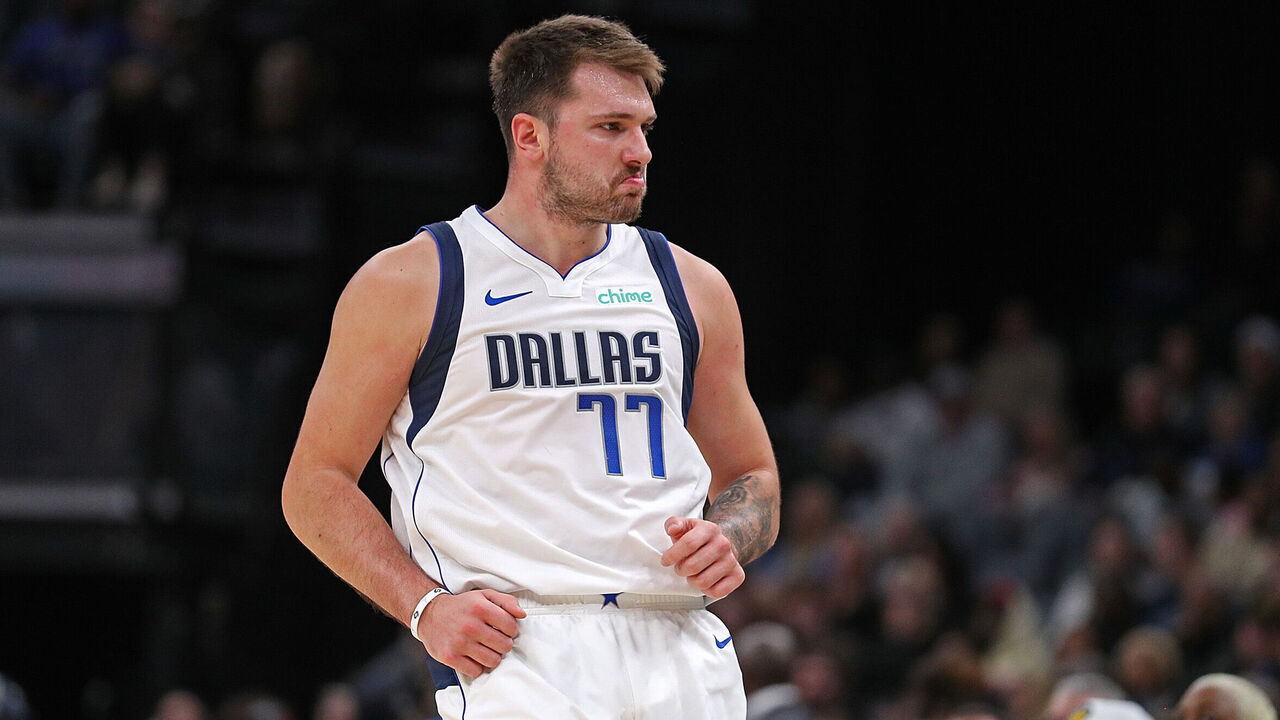
Perhaps it's the full-time presence of Kyrie Irving, the timely shotmaking of Grant Williams, Luka Doncic's shooting luck turning around, or a combination of all those things, but the Dallas Mavericks are finally thriving in crunch time.
Over the first five years of Doncic's career, the Mavericks had a 103-110 record in games that were decided in the clutch (within five points in the final five minutes), with a 26-29 record in such games last season.
Though clutch performance is heavily influenced by randomness and luck, you'd also expect a team led by a player as dynamic as Doncic to tip the scales in their direction. After all, he's supposed to be basketball's version of a closer. Except that he really hasn't been.
Though he's already had enough game-winners and buzzer-beaters to fill a highlight reel and set social media abuzz, Doncic actually entered this season shooting under 44% in clutch minutes over his career, with his crunch-time efficiency dragged down by a wretched 38-of-166 (22.9%) mark from deep.
Part of the problem has simply been that Dallas' Doncic-dependent offense was too predictable; there were too few weapons around him who could either help initiate the team's attack, pull some of the defensive attention away from Doncic, or make opponents pay for swarming him. Dallas may have finally solved those problems.
The Mavs are already 6-0 in games that enter NBA-defined clutch territory. For his part, Doncic has scored 25 points on only 13 shooting possessions in crunch time, knocked down five of seven 3-point attempts, and handed out four assists without committing a turnover.
Also worth monitoring when it comes to the Mavs is the performance of rookie center Dereck Lively and the fact Dallas is playing faster. The team has never finished higher than 18th in pace in the Doncic era and it finished 28th in that department last season, but it's up to 12th so far this year, adding nearly four (3.72) extra possessions per game. The Mavs are especially playing quicker after opponents' made baskets. - Casciaro
CP3 fitting in and fitting out in Golden State
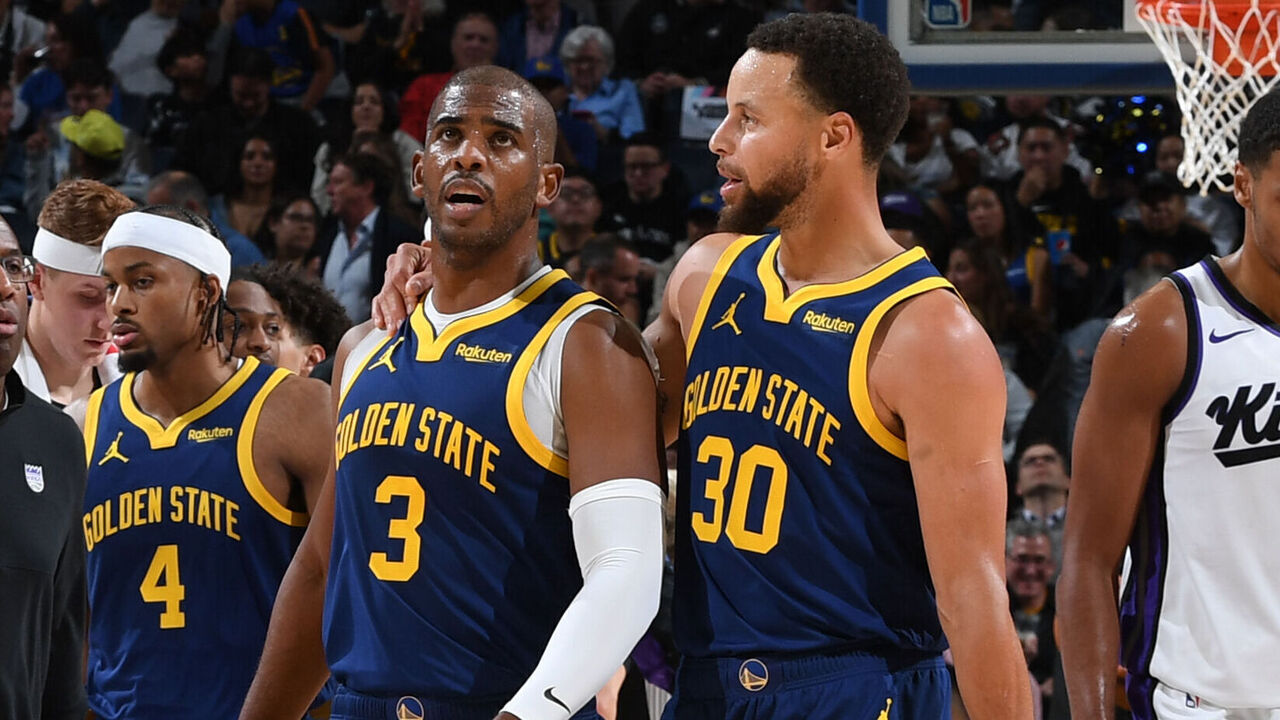
It wasn't the most impactful offseason addition, but Chris Paul joining the Warriors was arguably the most interesting marriage (or potential clash) of player and team. How would Paul's penchant for slowing the game down, reducing the risk, probing with his dribble, and running endless pick-and-rolls jive with Golden State's fast, freewheeling, organic, unpredictable brand of basketball?
Pretty damn well, it turns out. Paul is thriving as the Warriors' sixth man (a role he's playing for the first time in his life), partly by adapting and partly by staying the same. Maybe it shouldn't be a surprise that such a cerebral player picked up the team's offensive concepts in short order, but whenever Paul slots in alongside Steph Curry and the rest of the team's starters, he looks like he's been playing in Golden State's system for years; he's routinely getting off the ball early, relocating, making brilliant reads and extra passes, and generally playing within the flow.
When he's out there captaining the reserves, Paul still looks very much like Paul - in all his fastidious, micromanaging glory. It may not produce a very Warriors-y aesthetic, but his responsible stewardship is allowing the team to survive while regularly trotting out five-man bench groups. Paul gives those lineups structure, as well some reliable go-to plays - mainly pick-and-pops with Dario Saric and pick-and-rolls with Gary Payton II, Jonathan Kuminga, or Trayce Jackson-Davis. It's all working pretty well despite the fact Paul has lost most of his scoring juice and has shot 4-for-29 (13.8%) from 3-point range.
The balance isn't always perfectly harmonious; Paul can tip into over-dribbling when he's out there with starter-heavy groups and lapse into passivity when he's leading the bench. But the net effect has been overwhelmingly positive so far because of his sound decision-making at both ends.
One of the biggest ways that decision-making has impacted things is ball security. The Warriors have long been notoriously loose with the ball (partly as a consequence of their style of play), but with Paul on the floor, they limit turnovers at a 90th percentile rate, per Cleaning the Glass. That's led them to a top-10 turnover rate overall for literally the first time in the Steve Kerr era. In that 10-year span, they've only had one other season in which they even ranked above average. They were dead last a year ago, and 29th the year before that. Paul himself has an assist-to-turnover ratio of 10.3-to-1.
And here's the most important thing: The Warriors have never figured out how to succeed without Curry on the court, not even when Kevin Durant was in the Bay. But through eight games this season, they've outscored opponents by 8.3 points per 100 possessions when Paul's on the floor and Curry's on the bench. They're also at plus-21.8 per 100 - with a comical 131.3 offensive rating - when the two of them are on the floor together. - Wolfond
It's MAXey time in Philly

The 76ers had to trade a (perpetually) disgruntled James Harden at some point after The Beard's offseason request, but Tyrese Maxey's star turn made it easier for Philadelphia to move Harden in exchange for future-minded assets rather than an immediate upgrade.
That's because by passing the reins from Harden to Maxey, the Sixers already upgraded their outlook.
The two-man game between Harden and Joel Embiid helped the former win the assist crown and the latter win MVP while fueling the third-ranked offense last season. But Maxey's skill set is arguably a better complement for Embiid. The 23-year-old's combination of speed, limitless shooting range, and efficient playmaking pairs perfectly with Embiid's plodding, inside-out game.
An attack built around Embiid is never going to operate at breakneck speed - nor should it - but with Maxey taking control of the offense, Philly's gone from 24th in transition frequency last season to fifth so far this year.
The youngster's impact goes well beyond just pushing the pace. Through six games, Maxey is averaging 25.5 points and 7.3 assists on 50-44-93 shooting while ranking third in minutes, with an Eastern Conference Player of the Week award already secured. Among 50 players who've attempted at least 15 shots per game, Maxey's true shooting percentage (64.2%) ranks seventh, just ahead of Doncic. Among 42 players who are averaging at least five assists, none have a lower turnover rate than Maxey, who's coughed the ball up on only 5.5% of his possessions and owns an outrageous 6.3-to-1 assist-to-turnover ratio.
The pending restricted free agent is making a slam-dunk case for a max contract next summer. - Casciaro
Raptors have their man
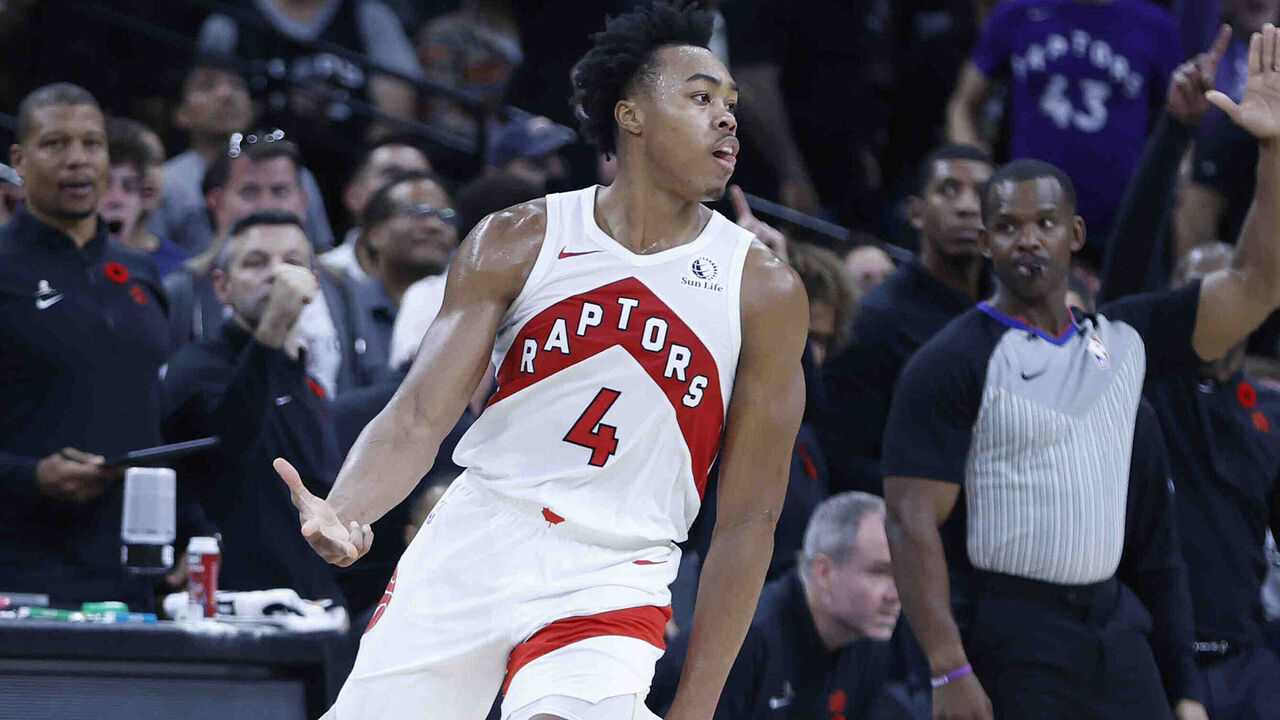
Toronto's half-court offense is still an absolute slog, the front office needs to resolve the futures of pending free agents Pascal Siakam and O.G. Anunoby (among others) after losing Fred VanVleet for nothing last summer, and the Raptors have won three of their first seven games. Yet Canadian fans should be thrilled about how this season has started.
Scottie Barnes' play has rendered all those concerns moot for now, with the Raptors discovering the foundational building block of Toronto's next contending team.
His stagnant and disappointing sophomore season brought as many questions about Barnes' ceiling as there were about the futures of Siakam and Anunoby. But early in his third season, Barnes is reminding us why the Raptors reportedly refused to include him in trade talks for Durant and Lillard over the last two offseasons.
The 22-year-old is averaging 22.6 points, 9.9 rebounds, 5.9 assists, 2.1 blocks, and 1.1 steals while shooting nearly 56% inside the arc and a scorching 42% from deep. After shooting 29% from long range over his first two seasons, Barnes has knocked down 23-of-52 3-point attempts between the preseason and regular season this year. While he's unlikely to maintain that level of marksmanship, Barnes becoming even an average 3-point threat would further unlock his devastating, all-around game.
Barnes spent his summer doing more running and conditioning work to prepare for an increased role in new head coach Darko Rajakovic's offense, and he's been an unabating ball of energy. He's leading the team in scoring and rebounding, fueling the Raptors' transition attack, and playing an inspired brand of defense, with his impact on that end now catching up to his physical tools. The only other players currently averaging multiple blocks and a steal are Anthony Davis and rookie giants Victor Wembanyama and Chet Holmgren.
If there's one sequence to summarize Barnes' scintillating start, it came as part of Toronto's Barnes-led comeback from 22 points down in San Antonio. After feeding Anunoby for a 3-point attempt, Barnes beat three Spurs to the rebound, then bullied and backed down Jeremy Sochan until he was close enough to the basket to cram it down on the young Spur. If Barnes is also going to be able to regularly make the kind of step-back 3-pointer that sent Sunday's game to overtime, the rest of the Association should be terrified. - Casciaro
Russell Westbrook, reinvented?
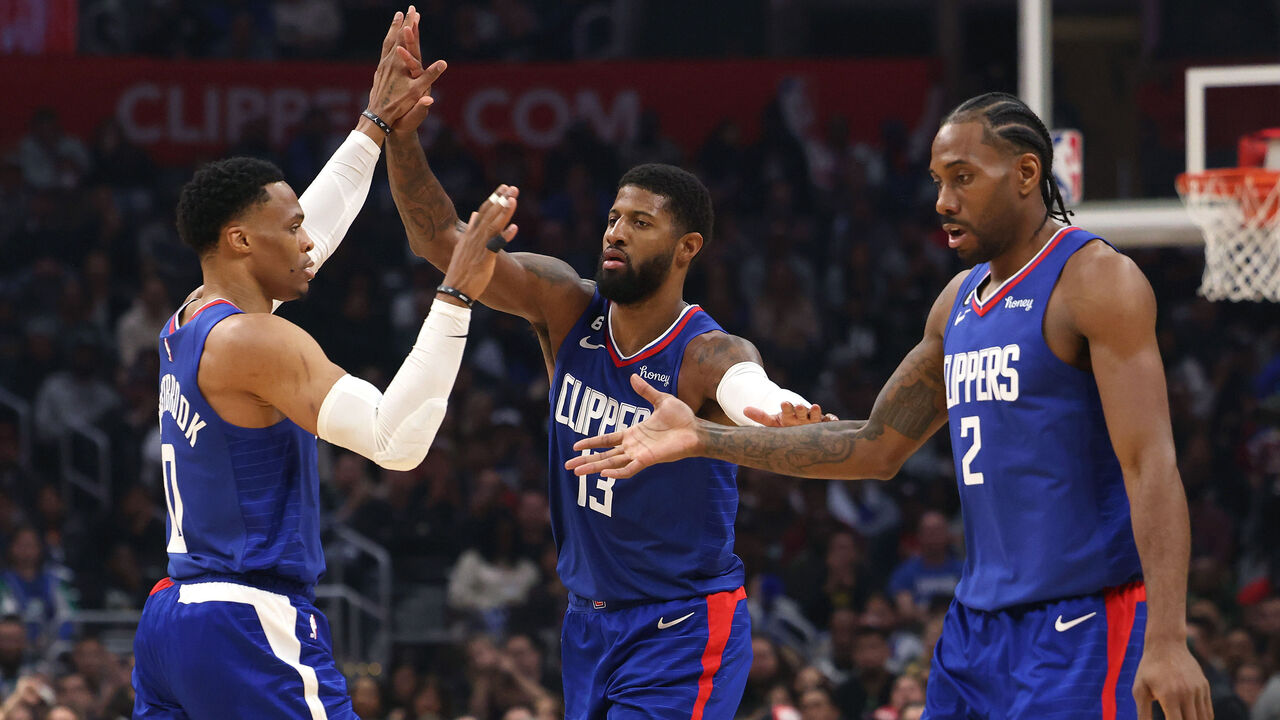
Before the Clippers acquired Harden, Westbrook was giving a team featuring Kawhi Leonard and Paul George exactly what it needed from its point guard.
The nine-time All-Star was striking a balance between hunting his own offense and getting the ball to his starrier teammates in a way many of us didn't think he was capable of. He was getting the Clippers out in transition and applying rim pressure while still mostly deferring to Leonard and George. He also spent the first two weeks of the season playing some of his best defense in years, moving without the ball more than ever, operating as a release valve for Leonard and George when they faced extra defensive pressure, and even scoring off cuts, as he did on his first basket of the season.
Westbrook used to struggle to go even one quarter without making a head-scratching decision with the ball in his hands, but watch film of his six games this year and you'd be hard-pressed to come up with even a handful of egregious mistakes (though he's still turning the ball over too often).
It's not only that Westbrook is shooting less; it's that many of the shots he's taking are coming within the Clippers' offense. A career-low 9% of his field-goal attempts are coming from the long to mid-range area, according to Cleaning The Glass, while a career-high percentage of his 3-point attempts are coming from the corners. In addition, Westbrook's traded in some of his pull-up attempts for more catch-and-shoot opportunities. After only 19.2% of his 2-pointers and 51.5% of his 3-pointers came via a teammate's assist over the first 15 years of his career, those numbers are up to 40.6% and 87.5% respectively early this season.
All of that helps explain why Westbrook's 15.5 points per game have so far come via a career-high efficiency, with the infamously bricky jump shooter canning more than 38% of his 3-point attempts. According to Basketball Reference, Westbrook owns an above-average true shooting percentage for the first time since his MVP season seven years ago. Can he keep it up with Harden in the fold and a potential bench move on the horizon? - Casciaro
NBA's best offense

Sure, the Pacers boast the league's most efficient offense due largely to a 152-point explosion against a Spurs team that entered the matchup sporting a bottom-five defense - but you can only score on and beat who's in front of you. And good Lord, are the Pacers scoring.
Indiana has scored 120.4 points per 100 possessions while playing at the league's second-fastest pace. In seven games, the Pacers scored at least 104 points in every contest, topped 120 points five times, exceeded 140 points twice, and cleared 150 in the win over San Antonio.
Tyrese Haliburton is pushing the pace while possessing one of the league's best combinations of shooting and playmaking. There's the additional shooting of Myles Turner, Buddy Hield, Aaron Nesmith, and rookie Ben Sheppard, and the foul-drawing of Bennedict Mathurin. Add in the do-it-all, connective energy of new Pacer Bruce Brown and Indiana has a variety of aesthetically pleasing ways to slice and dice opponents.
The Pacers have resorted to isolation play on less than 4% of their possessions. They're the league's fifth-ranked team in transition frequency. They don't turn the ball over, they run spread pick-and-roll around Haliburton and Turner, and they let it fly on the catch. They're not going to shoot 39.2% from deep as a team much longer, and it's unlikely they'll finish the season with the best offensive rating this year (let alone of all time), but this offense is legit as long as Haliburton stays healthy.
Head coach Rick Carlisle is back in his bag. - Casciaro
Rudy Go Brrr
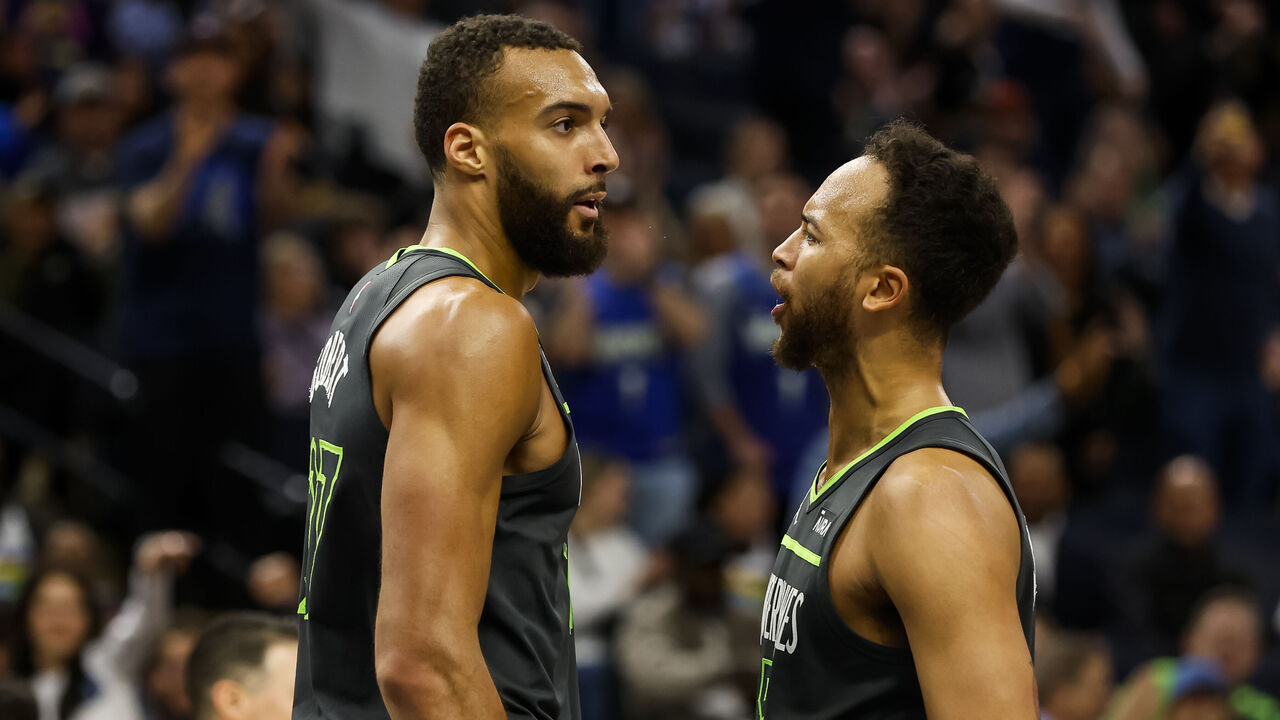
It flew under the radar last season because the Timberwolves could never seem to get healthy or stay out of their own way, but after an uncharacteristically choppy defensive start, Rudy Gobert morphed back into the rim-blotting menace he's always been. As if to firmly put to rest any notion that he might be slowing down on the wrong side of 30, the three-time Defensive Player of the Year has picked up right where he left off in the spring. He's looked as bouncy and imposing as ever through the first two weeks of the 2023-24 campaign, quickly re-establishing himself as the best rim-protector in the game.
Gobert is far from the only reason the Wolves lead the league in defensive rating by a significant margin and have allowed about 11 fewer points per 100 possessions than league average. Jaden McDaniels remains a monster in every conceivable role, Anthony Edwards has leveled up again as an on-ball hellhound, and everyone else - from Mike Conley to Kyle Anderson to Nickeil Alexander-Walker to, yes, Karl-Anthony Towns - has been working like crazy and rotating on a string. But Gobert's work on the back line and in ball-screen coverage is the mortar that binds the whole structure.
His presence at the rim either deters would-be drivers or renders the vast majority of their attempts futile. He's holding opponents to 36.7% shooting inside the restricted area, an almost impossible number even in a tiny sample. And Minnesota's rate of rim shots allowed drops by 10.7 percentage points with him on the floor, which is the difference between having the second-lowest opponent rim frequency in the league and the sixth-highest.
He's also held up well in space when he's been asked to show high or switch. Even the five-out Celtics, whose army of stretch bigs and pull-up shooters and driving threats is perfectly engineered to exploit traditional bigs, couldn't do anything to diminish Gobert's defensive impact on Monday night. The Wolves handed those Celtics their first loss of the season (holding them 26.5 points per 100 below their season average), five days after doing the same to the Nuggets with Gobert playing spy against Nikola Jokic. He was a plus-39 across the two games despite shooting 0-for-7 from the field in the first game and 2-for-11 from the free-throw line in the second. He's been that good defensively.
A huge part of the Wolves' success is that they've been excellent at cleaning the defensive glass and limiting fouls, both of which have been serious problem areas for them for years. Gobert has been the biggest driver of that improvement, which was part of the vision when they acquired him in the first place. Now that he's actualizing it, Minnesota looks capable of fulfilling the potential that seemed evident when it swung that controversial move. At least at one end of the court. - Wolfond
Cam Thomas: Professional scorer
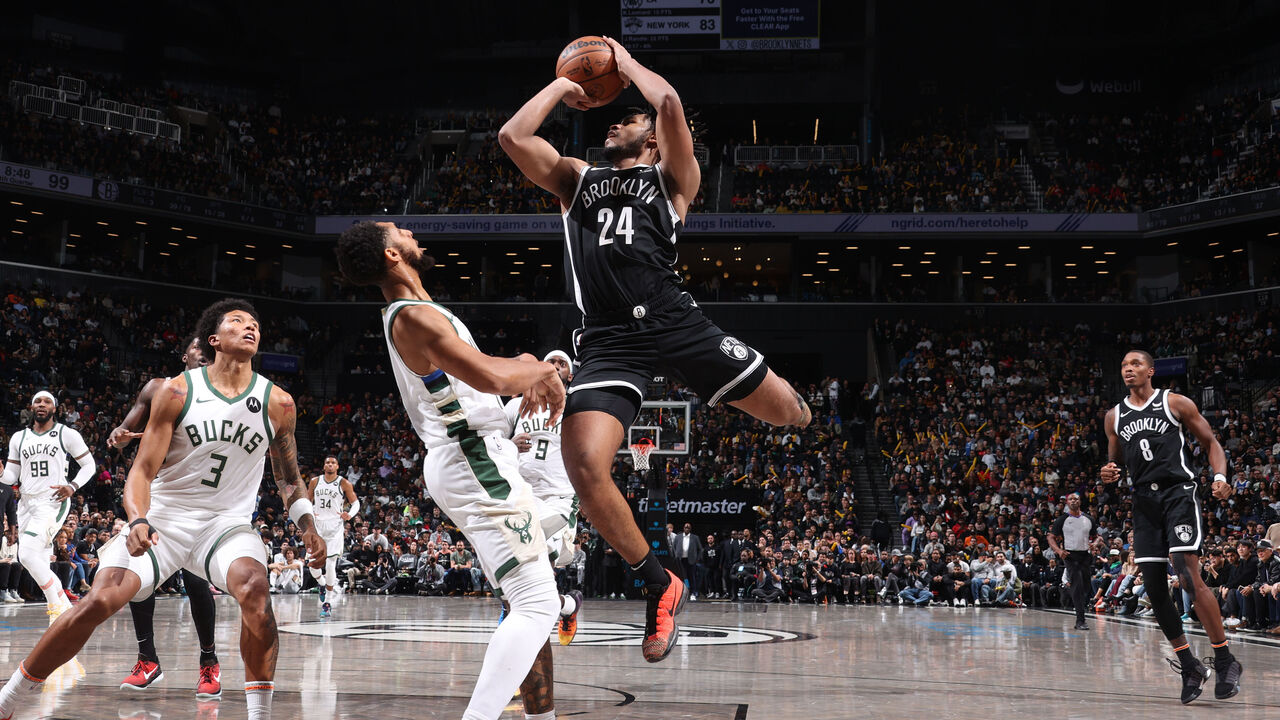
The top-10 scorers this season feature All-Stars, MVPs, future Hall of Famers ... and 22-year-old Nets guard Cam Thomas, who averaged 8.1 points over his first 101 games as a pro. Since then, Thomas has erupted for five 40-point games over his last 30 contests dating back to last season. Only three other Nets have as many 40-burgers in the franchise's history.
Thomas' last such outburst - a 45-point performance on 17-of-33 shooting - brought his early average to 28.7 points per game and nearly helped Brooklyn topple the Bucks. Thomas torched Milwaukee with a barrage of threes, pull-ups, step-backs, drives, and floaters, with the 6-foot-4 guard showing off the high arc on his shots necessary to beat taller defenders.
Thomas hasn't shot the ball well from deep at the NBA (32.1%) or collegiate (32.5%) level. He's prone to the same tunnel vision most score-first guards his age struggle with, and he isn't a good defender (though his effort has been better on that end this season). So I understand why skeptics doubt his ability to blossom into a legitimate star. But there just aren't many hoopers alive who can put together a scoring stretch like the heater Thomas has been on since February, let alone players this young.
At worst, he's a microwave-scoring, mid-range assassin. At best, he'll be one of the league's premier three-level scorers in due time. - Casciaro
Bonus observation: Can Julius Randle ever put two good seasons together?
The two-time All-NBAer still has plenty of time to prove he can do it, but his effectiveness is too tied to his streaky jump shooting, which has once again abandoned him like it did a couple years ago. Randle's shooting percentage through his first six games was the worst of any player to start a season since 1959. After a solid performance in a Monday upset of the Clippers, he "upped" those percentages to 33.3% inside the arc, 25% from deep, and 67.5% from the free-throw line. Good thing he doesn't let what happens on the offensive end affect his overall effort. Oh, wait.
Perhaps some supernatural force ensures one of Randle or RJ Barrett must always be slumping. Barrett is currently enjoying one of the hottest shooting stretches of his career while Randle and Jalen Brunson build a house made of bricks at MSG. Among 50 players averaging at least 15 shots per game, Brunson and Randle rank 44th and 50th, respectively, in true shooting percentage. - Casciaro
HEADLINES
- Quintana gets 100th win as Mets blank Reds for 9th straight victory
- Cortes upset Yankees moved him to bullpen: 'I've been the workhorse'
- Dodgers' Hernández avoids major foot injury, could return by Tuesday
- Report: Mavs bring back vet Markieff Morris
- Braves' Merrifield fractures foot same week he was hit in head by pitch